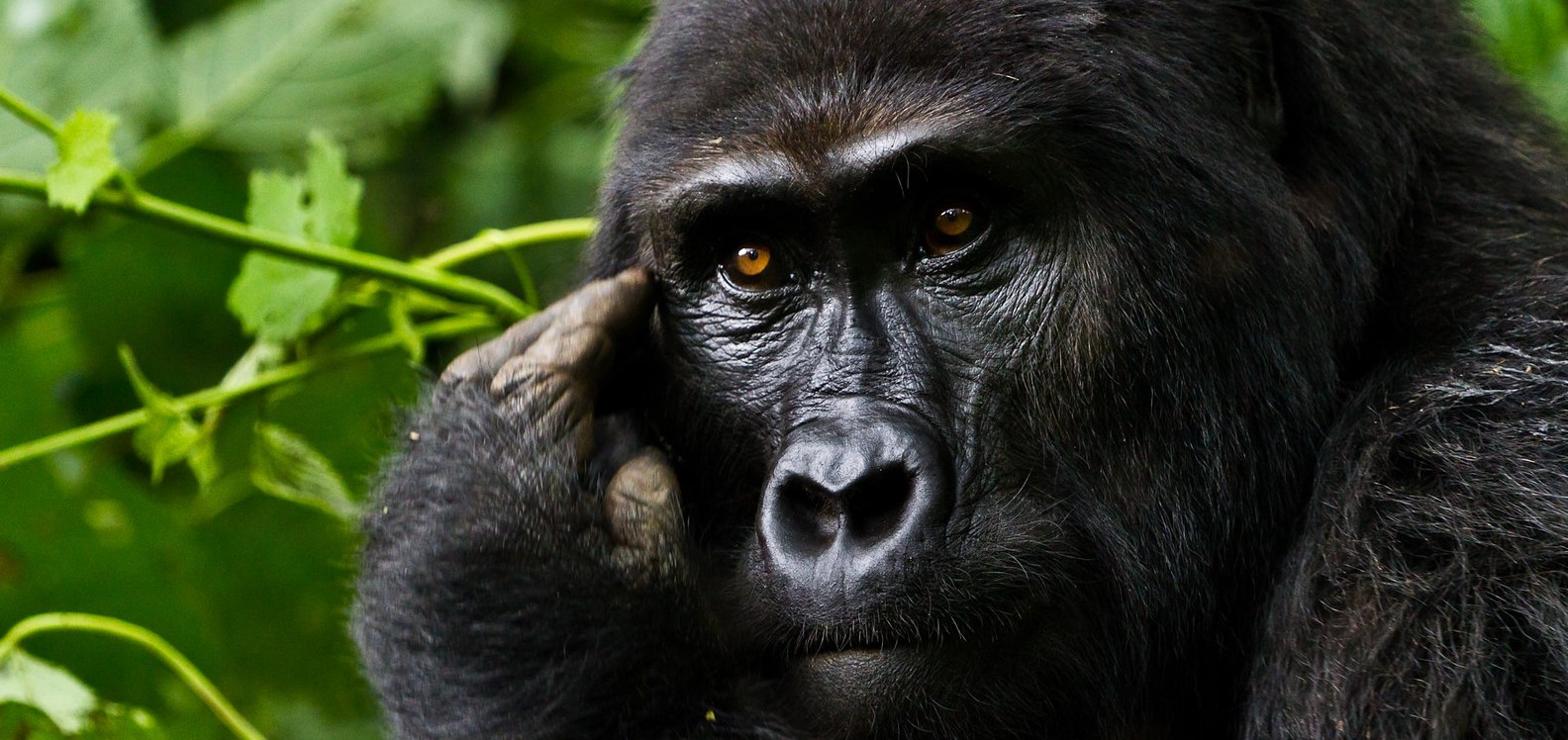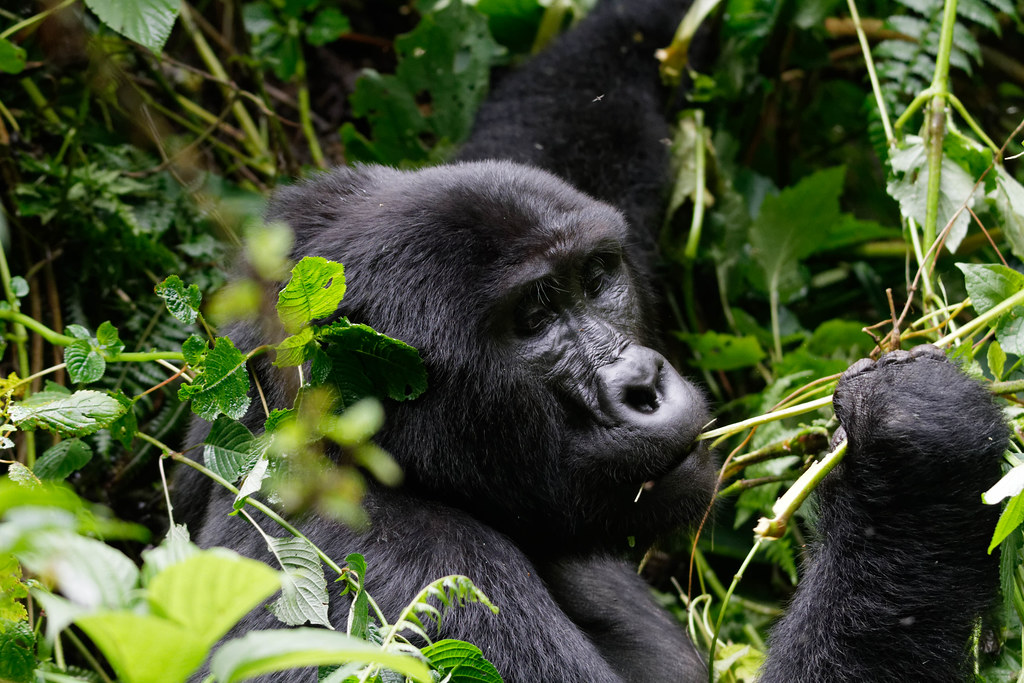Mountain gorillas are among Africa’s most fascinating and iconic creatures, embodying the wild beauty and delicate balance of the continent’s high-altitude rainforests. Known for their strength, intelligence, and deeply social nature, these gentle giants capture the hearts of everyone lucky enough to encounter them. Over the years, they have also become a symbol of successful conservation, proving that with dedication and collaboration, even the most vulnerable species can be saved. For anyone curious about mountain gorillas, this guide explores everything you need to know about their lives, habitat, threats, and why visiting them in the wild is an experience like no other.
What Are Mountain Gorillas?
Mountain gorillas (Gorilla beringei beringei) are a subspecies of the eastern gorilla, distinct from their lowland cousins because of their adaptation to life in cool, mountainous environments. They are robust and muscular, with thick fur that protects them from the chilly temperatures of the high-altitude forests they call home. Adult males, called silverbacks, develop a striking patch of silver hair across their backs and shoulders when they mature, a mark of dominance and leadership within their group. Females are smaller but equally important, nurturing infants and maintaining harmony within the family.
Mountain gorillas are intensely social animals, living in cohesive groups of up to 30 individuals led by a dominant silverback. Their family structure is highly organized, with clear roles and affectionate bonds. They communicate using a rich repertoire of sounds, gestures, and even facial expressions, displaying intelligence and emotions remarkably similar to our own. Spending a moment observing them in the wild feels almost like looking into a mirror of humanity’s origins.
Where Mountain Gorillas Live
Mountain gorillas are found in only two regions on Earth, both located in East-Central Africa. The first is the Virunga Mountains, a chain of volcanic peaks spanning the borders of Uganda, Rwanda, and the Democratic Republic of Congo. Here, they are protected in three parks: Volcanoes National Park in Rwanda, Mgahinga Gorilla National Park in Uganda, and Virunga National Park in Congo.
The second population resides in Uganda’s Bwindi Impenetrable National Park, an ancient rainforest that is a UNESCO World Heritage Site. Unlike the open bamboo and alpine forests of the Virungas, Bwindi is a dense and tangled jungle, offering a different trekking experience and remarkable biodiversity.
Combined, these two regions support just over 1,000 mountain gorillas — a number that has grown steadily over the last few decades thanks to tireless conservation efforts.
How Mountain Gorillas Live
Mountain gorillas spend their days foraging for leaves, stems, shoots, and occasionally fruits, consuming massive quantities of vegetation to sustain their large bodies. They are mostly terrestrial, moving gracefully through the undergrowth but capable of climbing trees when necessary. Social interactions dominate much of their daily life — grooming each other, playing, resting together, and raising young as a close-knit family.
The silverback plays a vital role as both protector and decision-maker. He leads the group to feeding areas, intervenes during disputes, and defends his family against intruders. Infants are raised with incredible care, often doted on by every member of the group.
Why Mountain Gorillas Are Endangered
For much of the 20th century, mountain gorillas faced a perilous decline due to habitat destruction, poaching, human encroachment, and disease. Their forest homes were cleared for agriculture and settlements, fragmenting their territory. Poachers targeted them for bushmeat or to capture infants for illegal trade, often killing protective mothers in the process. As humans moved closer to their habitat, diseases like respiratory infections also became a serious threat to gorilla health.
Thanks to global awareness and effective conservation programs, their numbers have climbed slowly but steadily, making mountain gorillas one of the few primate species to see population growth in recent years. However, they remain endangered and dependent on continued protection.
 Seeing Mountain Gorillas in the Wild
Seeing Mountain Gorillas in the Wild
For wildlife lovers and adventurers, seeing mountain gorillas in the wild is an extraordinary privilege. Trekking through mist-shrouded forests, guided by skilled rangers and trackers, to spend one magical hour with a gorilla family is an experience that leaves a lasting emotional impact. Watching a silverback watch over his group, mothers nursing their babies, and juveniles tumbling playfully in the undergrowth is a humbling reminder of the fragile beauty of life on Earth.
Visiting them also contributes directly to their survival. The revenue from gorilla permits funds anti-poaching patrols, veterinary care, research, and community development, making gorilla tourism a powerful force for conservation and sustainability.
The Legacy of Mountain Gorillas
The story of mountain gorillas is a testament to what humans can achieve when we choose to protect rather than destroy. From the pioneering work of Dian Fossey to today’s collaborative conservation programs, these creatures have inspired generations to care about wildlife and wilderness.
As we move into 2025 and beyond, the survival of mountain gorillas depends on continued vigilance, responsible tourism, and a shared commitment to preserving their rainforest homes. For anyone visiting East Africa, meeting these gentle giants is not just a wildlife encounter — it is a deeply moving connection with nature’s resilience and beauty.





